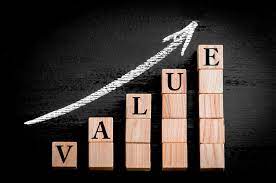We need to develop a deeper understanding of the value creation/realization process.
Too many sellers tend to think about value creation as something sellers create “for” customers. Sellers focus on the value customers receive in the implementation of their solution, or “value realization.” Sellers focus, often using sophisticated analytic tools, on the return customers would get in implementation. The strategy usually suggests that, somehow, the value a customer might realize is greater than that which they might realize with any other alternative.
Probably, more often, sellers talk about features/benefits, leverage similar situations and how these help the customer achieve their goals, but there is rarely the deep analysis assessing the risks, challenges, and what it takes to realize that value. The customer is left to assess that, themselves, comparing it to the alternatives, determining which creates the greatest value.
And, too often, absent any good tools or support from sellers, the value assessment is based on price or cost. Customers believe each solution can help them achieve their goals so value becomes a comparative cost analysis.
Value realization, in this case becomes the value realized by the customer in implementing a solution. And the value the successful vendor receives through the revenue generated.
And those vendors not selected realize $0 revenue–or value from the process. (Though one can make an argument that some non $0 value can be gained if we conduct deep loss reviews to learn how we improve.)
In recent years, we’ve started taking a more complete look at value creation. Some sellers recognize the importance of the value created in the customer buying process. Recognizing how customers struggle to understand and reach a decision in which they have confidence, the things sellers do to help the customer manage their project and make sense of what they learn is an important part of the process.
While the value realized from the implementation of any solution may be the same, the value created by the various sellers may be very different. And this may be the most differentiable aspect of the process. After all, if any solution will present roughly similar outcomes, then the people that have been most helpful to the customer in managing the process and decision have created more value.
Again, today, too many sellers don’t understand this, continuing to focus on the value realized by the solution.
But what about the value the seller realizes in this process? As sellers, we sometimes neglect to understand the value we get from the process. But some of the areas in which we can get great value in the process is a much deeper understanding of the customer–both the enterprise and individuals. We learn more deeply how they feel about an issue/challenge/problem. And that learning is very specific to them, at that moment. This enables the seller to build stronger strategies, being more responsive to the customer, improving the value that can be created in helping the customer navigate the process.
Sellers, also, develop deeper relationships, trusting the customer as they develop deeper trust for the seller.
This value is created with the customer in the process, and both the customer and seller must get value in these interactions in order to move forward with confidence.
This get us–both buyers and sellers to an interesting point about value creation. And too often, we forget it.
In each interchange, both the buyer and seller assesses the value of that interaction. Is each getting enough value out of that interaction to go the next step?
Value creation is a building process, not a destination. The customer and we continually assess “What value we gotten from this exchange, what have we created with each other? Is that sufficient to go the next step? What if it isn’t?” Each interaction must build on the value created in the prior interactions-both for the customer and seller.
Too often, customers and sellers don’t consciously think of this, we pursue conversations that don’t build value and waste time.
At some point, the right decision may be the best value we create is stopping.

Leave a Reply